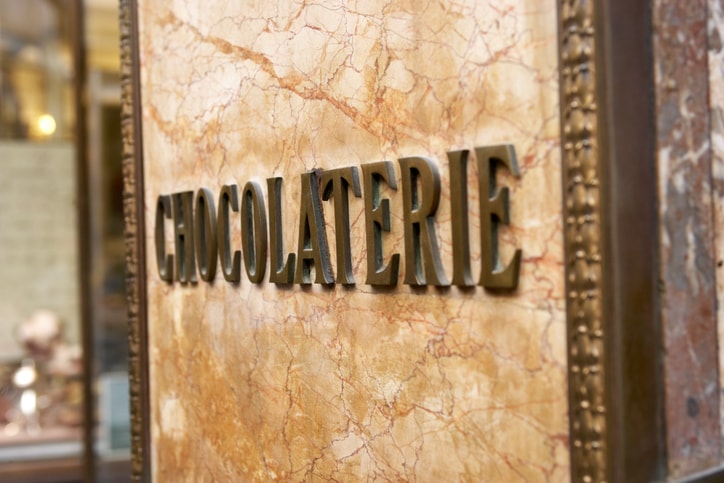By Hannah Whittenly
Selling a food product can be extremely difficult. After all, it is a huge niche to market in and can take a lot of effort to get to the point where your product is well-known or competitive with major brands. That is why many edible products that businesses sell come and go within just a few years. Although many factors play a role when it comes to that, you can do your part by stepping up your game when it comes to packaging as that will definitely help you to stand out. Here is what you need to consider:
Make Your Packaging Attractive
When people see your product, they first see the way that it is packaged. Typically, they don’t see the actual product for what it is until the packaging is opened. Because of that, making sure that your packaging is attractive is extremely important. Otherwise, potential consumers may never pull your product off of store shelves. According to 99designs, the first things you need to consider is clarity and simplicity. By this, they mean that the packaging should clearly answer two questions when a consumer is looking at the product.
- What’s the product for?
- What’s the brand behind it?
99designs also lists the concepts of honesty, authenticity, shelf impact (does it stand out?), extensibility (allows for product variation), and practicality (this takes into account the shape, size and functionality of a product’s container) as being five other rules that businesses should consider for their food product’s packaging.
Although there are many great designs out there, one that meets those requirements is Briaura Artisan Food Boxes. As described by HowDesign, their packaging has a fresh and clean style. Upon taking a closer look at the product, you can easily tell what it is for—using specially created mixes for baking a variety of different foods. The brand also promotes using all-natural and non-GMO ingredients.
The honesty and authenticity factors are shown in the pictures, which are delicious-looking but not overly embellished (a tactic many food industry brands use to promote visual attractiveness). The food pictures on their boxes actually looks real! Extensibility is present in that the brand name “Briaura” and the format is the only part that remains the same from product to product. Each different type of box is differentiated by unique pictures and an alternate color. Lastly, the concept of practicality is great as they can be stacked sideways or upright, which make it perfect to organize in a cupboard or pantry.
Use Nutritional Profiling to Your Advantage
Today, more and more people are becoming conscious of their health. Because of this, having proper nutritional profiling is important. Make sure to have your product tested by a third party and meet the labeling requirements that may be in place where you sell your food. This way, your customers can be assured that your product meets all regulatory codes and mandatory food standards.
However, don’t just give the information that you absolutely have to have on your label. If your product is geared towards those who are health-conscious or are following a certain diet plan, you may want to have your labels include extra information that could interest those individuals. If you’re selling a product that you hope will attract those following paleo, keto or another low-carb lifestyle, for example, you’ll want to include information that they’ll want to see. If your product doesn’t use any ingredients that use any elements of gluten, corn, grains, etc, then you should put that on the label as well. We see that a lot with products being labeled as “Gluten-Free”, but it could be beneficial to label your products as “Corn-Free” or “Grain-Free” as well (if that label truly applies to your product).
Be Conscious of the Materials You Use
One of the biggest trends of today is being eco-friendly. There’s a good chance that your customers actually care about the environment. By using materials that can be recycled or come from recycled materials, you show your customers that you care about their concerns.
After all, it is well-known that food packaging has led to negative impact on the environment. By showing that you’re aware of that, you are helping to solve that problem. You’re saying that you don’t want to contribute to landfills and our oceans being littered with trash. Other environment problem-solvers will see that your concerns align with theirs—this helps them to be build a connection with your brand and to, possibly, become an advocate for your product line.
You don’t have to make this a big marketing ploy for your brand, either. All you’d have to include in your product design is the simple blurb, “Our packaging is made from recycled materials”. Of course, you could add an, “Our Story” part on the back of your packaging to talk about that in more depth. To know if that would be advantageous for your product, know the local culture of where you’re selling. If you’re selling mainly in California or Oregon where people are known to care a lot about the environment, then that is something that you’d definitely want to do in that region. If you were selling primarily in a location where that emphasis wasn’t a major part of the culture, then that tactic would probably not be as worth it to you.
There are a lot of things to consider when it comes to designing your product’s packaging. The above three points are just suggestions, but they are definitely worth considering. As you go about applying them and researching other tactics to include in your design process, make sure to keep in mind your potential customers and their concerns and needs. If you do that, success will be on the horizon!
Hannah Whittenly is a freelance writer and mother of two from Sacramento, CA. She enjoys kayaking and reading books by the lake.







